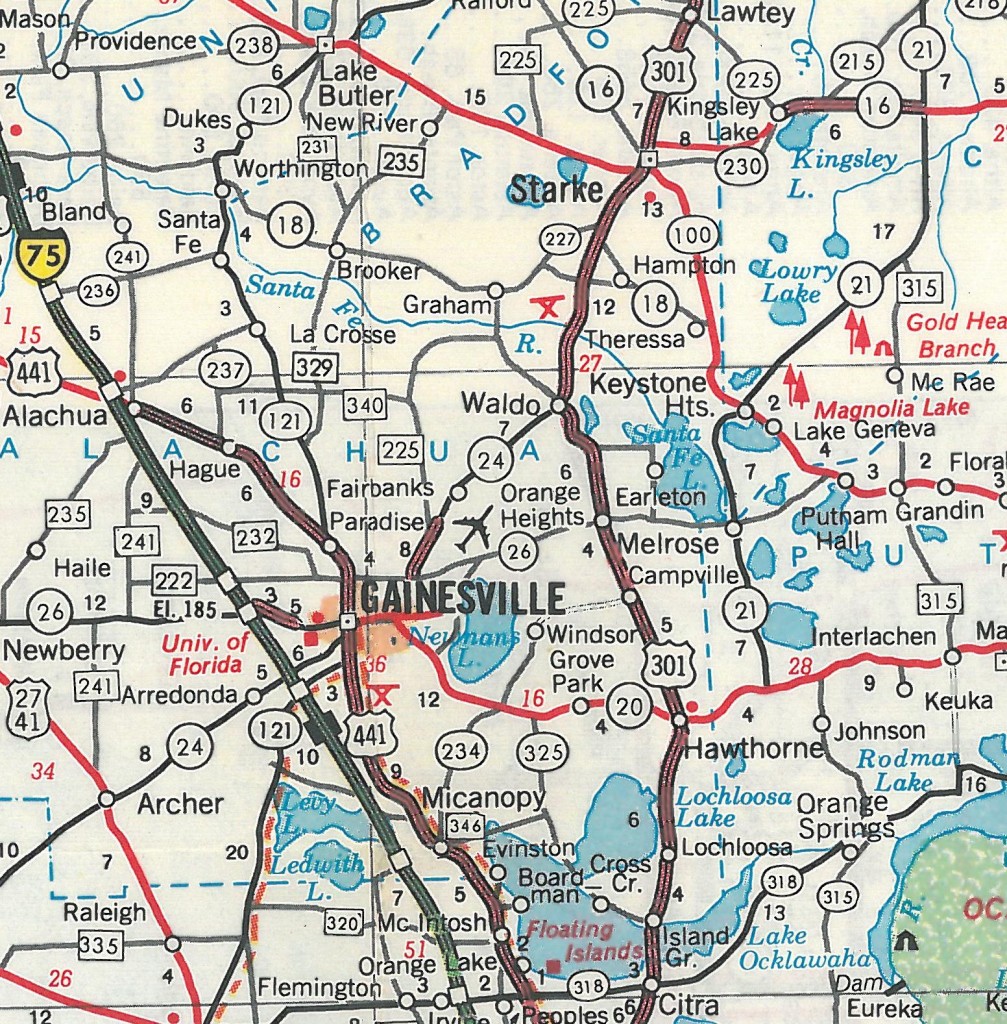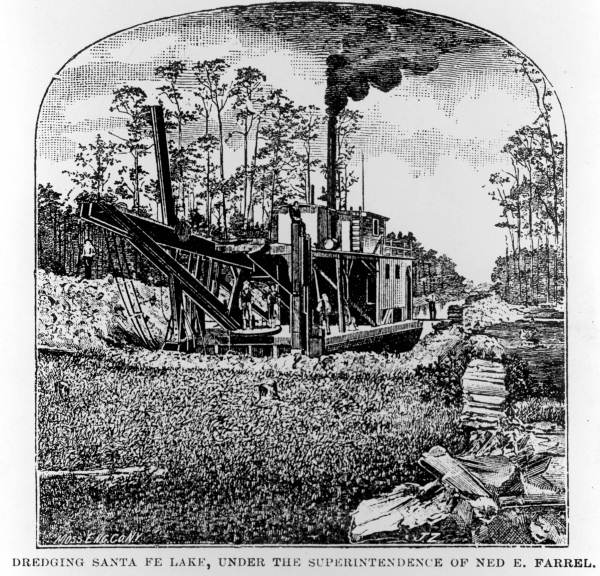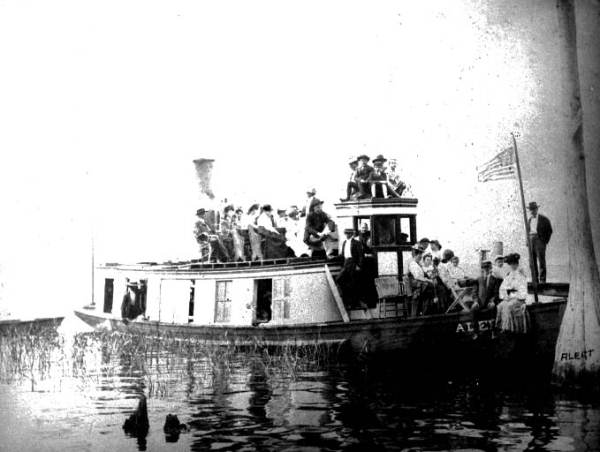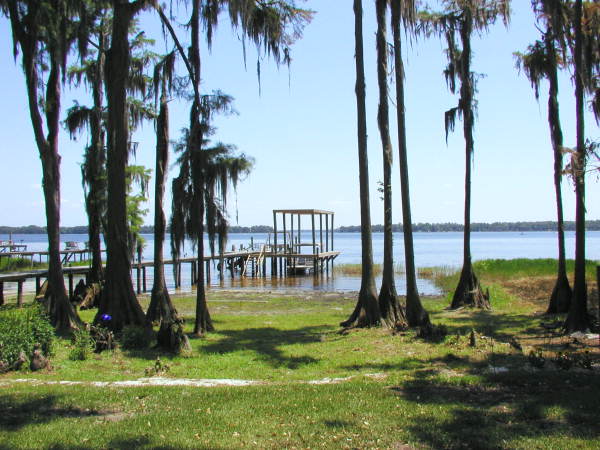Description of previous item
Description of next item
Headin' Down the Waldo Canal
Published August 8, 2014 by Florida Memory
How long do you suppose it would take you to drive 11 miles? Maybe 15 minutes? Probably less if you had an interstate highway at your disposal. And we do it all the time; folks all over Florida are obliged to drive that far and much farther sometimes just to get to work, school, or the grocery store. These days, it’s not much of a hassle to drive 11 miles, but for residents of Melrose, Florida trying to ship oranges and lumber and other products in the late 1800s, traveling that distance to the nearest railroad was a real pain in the neck. Until they decided to do something about it, that is.
Even in the late nineteenth century, transportation in the center of the state was difficult. The railroad from Fernandina to Cedar Key was in operation, but getting freight goods to a shipping point on the railroad could be quite a challenge. Roads were sandy and impractical for this purpose. Water transportation, where it could be used, was much more efficient. The citizens of the town of Melrose at the south end of Lake Santa Fe badly needed access to the railroad, but the nearest depot was at Waldo, eleven miles away across punishing terrain.
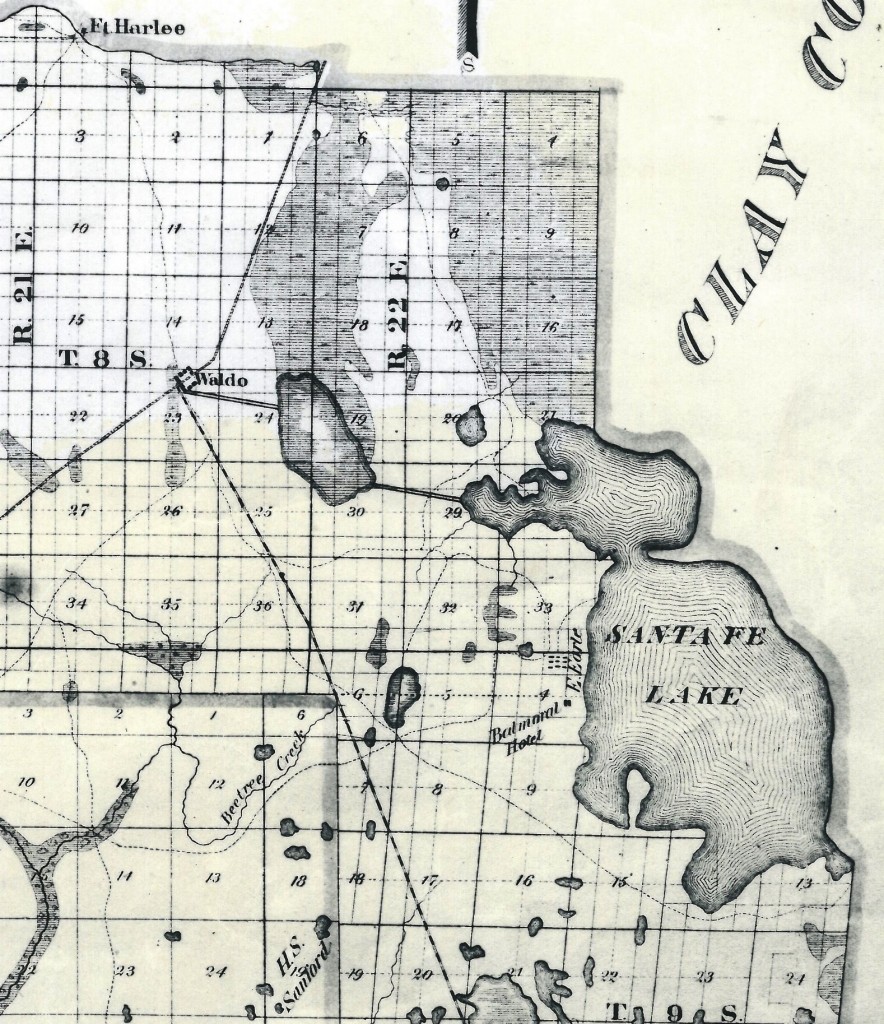
A reproduction of an 1885 map showing the route of the Waldo Canal linking lakes Alto and Santa Fe. The line extending southeast from Waldo was the proposed route for the Florida Central Railroad between Waldo and Tampa.
No river ran directly between Melrose and Waldo, but lakes Santa Fe and Alto very nearly made the connection. The lakes were separated by a narrow strip of land that many believed could be crossed by a canal, linking the two bodies of water together and creating a faster, safer water route for transporting trade goods. The Santa Fe Canal Company was chartered in 1877 to begin work on the canal, and construction was completed in 1881. When it was first opened, the passage was about 30 feet wide and about five feet deep. Boats could now gather freight from the communities along the southern end of Lake Santa Fe and get them all the way to the north end of Lake Alto, where they were loaded onto a spur line and carried to Waldo and transferred to the Fernandina-Cedar Key Railroad. A short canal from Lake Alto toward Waldo was also dug, although it never reached all the way into town.
For all its usefulness, the Waldo Canal suffered from a serious case of bad luck. The steamer F.S. Lewis, which had been built in Waldo especially for use in the local lakes connected by the new canal, was a bundle of problems. Its drive shaft broke on one of its first voyages, disabling its paddlewheel and stranding its passengers. Its large size pushed its hull too deep into the water for it to make deliveries or pick up goods at smaller stops like Earleton. On one occasion, the steamboat capsized during a storm. The boat was righted again, only to catch fire and sink while tied up at Shooter’s Landing on Lake Santa Fe.

The F.S. Lewis, a steamer used to transport goods and passengers across lakes Alto and Santa Fe (circa 1880s).
The F.S. Lewis was replaced by the Alert, a tugboat purchased in Jacksonville and transported to Alachua County by flatcar. The Alert was smaller, more fit for service than luxury, but it was sufficient to resume the transportation of freight and passengers across the lakes and through the canal. That is, when the canal was not filling up with sand. With a depth of only a few feet, the canal was frequently blocked by soil washing in from the sides, and workers would have to dig it out before traffic could resume. Water hyacinths also took their toll over the years.
The death of the Waldo Canal as a commercial enterprise came partly as an act of Nature and partly as a result of man-made technology. In the 1890s, a series of severe freezes devastated the citrus industry in the area near Melrose, driving citrus growers southward and depriving the canal of some of its biggest shipping customers. Not long afterward, the arrival of the automobile led to the construction of new roads to replace the old sandy trails that had been so tough to navigate in earlier years. The canal itself remained open to small craft, but the era of inland steamboat transportation was coming to an end in Florida.
Did you know the Florida Photographic Collection has over 1,300 images of steamboats in Florida? Find a steamboat that once operated in your favorite part of Florida and share our photo of it on Facebook!
Cite This Article
Chicago Manual of Style
(17th Edition)Florida Memory. "Headin' Down the Waldo Canal." Floridiana, 2014. https://www.floridamemory.com/items/show/295204.
MLA
(9th Edition)Florida Memory. "Headin' Down the Waldo Canal." Floridiana, 2014, https://www.floridamemory.com/items/show/295204. Accessed December 31, 2025.
APA
(7th Edition)Florida Memory. (2014, August 8). Headin' Down the Waldo Canal. Floridiana. Retrieved from https://www.floridamemory.com/items/show/295204

 Listen: The World Program
Listen: The World Program